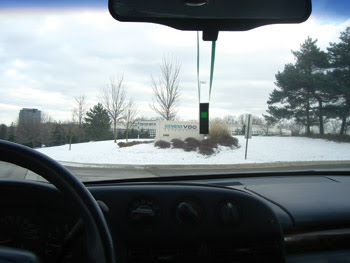PDA-like displays and signal LEDs may soon change instrument cluster appearance and enhance safety.
Dr. Vyacheslav Birman and Igor Pospelov, Siemens VDO Automotive
Advancements in lighting sources and display technologies have enabled the development of new PDA-size automotive instrument clusters. In a space of just 3 to 4 inches, graphical symbols and different colors provide the driver with a range of information on vehicle conditions including speed, revolutions per minute, gas level, temperature and mileage as well as information on radio stations, incoming phone numbers and directions.
In one prototype under development, warning lights are located in the center portion of the display. A full gas tank is indicated by green lighting at the top of the gauge, which slowly changes to red as the level drops, so the driver can quickly see when it’s time to refuel. To signify that the engine is cold, the entire temperature gauge appears as blue. The area required to present this information is five to seven times smaller than currently used clusters, saving automotive designers valuable space while still communicating important information.
Just how visible instrument clusters are is an important question. The human eye cannot perceive changes in vehicle status as they occur and watch the road at the same time because the area of high cone density of the human retina is quite small. Spatial resolution of the retina varies significantly across different portions of it. The fovea, a small, rodless area, has much higher spatial resolution than other areas. Color resolution, however, remains constant across different sections of the retina. Because of this, Siemens VDO Automotive of Auburn Hills, Mich., is working with small color displays that may be implemented in automotive instrument clusters as LED and organic LED technology becomes more affordable.
An LED signal
When a red or yellow warning light comes on, such as the red indicator for an unfastened seat belt or the blue one for high beams, a driver keeping his or her eyes on the road can see its color but not its shape without looking at the instrument cluster. To read the information, drivers must take their eyes off the road to scan the entire cluster and to project the area of interest onto the fovea. The challenge of design is to reduce the time spent observing the panel and to increase the time spent observing the road.
When looking at the cluster, drivers do not scan the entire area. In most cases, they look only at the area containing the required information. For example, to find out their speed, drivers look only at the speedometer near the pointer and then look back at the road. It is a characteristic of human vision to scan just an area of interest, to look only at the portion of the gauge located near the pointer and not the entire gauge. Automotive designers take this fact into account when developing instrument clusters that show just a portion of the scale, as with a speedometer or tachometer.
To help keep drivers’ eyes on the road and off the instrument panel, Siemens is working on a signal light that would be placed within easy view and that would use color to tell the driver when to look at the instrument panel for critical information. The signal light uses three LEDs, with green indicating that all is well, yellow warning that something could be amiss and red indicating that it is critical that the driver pay immediate attention to the instrument panel. For example, if the gas is getting low, a yellow LED would light as a caution. If the vehicle’s temperature reaches a dangerous level, a red LED would light to alert the driver.
In testing, Siemens found that an effective luminance value is between 200 and 300 cd/m2. This type of internal signal light could be placed in various locations in the vehicle’s interior, such as on the rearview mirror or on the dashboard. The prototype shown in Figure 1 has a luminance value of 190 cd/m2.

A prototype LED signal light is shown prominently displayed on the rearview mirror. In this case, a green light is lit, indicating that all is well. If the light were yellow or red, the driver would know to look at the instrument panel for more information.
The signal light has potential uses beyond just alerting the driver to look at the instrument panel. When linked to a navigation system that contains speed limit information, the signal could warn the driver of exceeding the limit. Again, a green light would mean that their speed is within a given range, yellow would mean they are exceeding the limit by 1 to 9 mph and red would indicate that they are over the speed limit by 5 to 10 mph. Implementing this type of signal light would be relatively low in cost.
It seems reasonable to simply develop a cluster of much smaller size using color as the primary information carrier. As the amount of information on the cluster increases, use of an LED signal light would decrease the time the eyes are taken off the road and would provide two channels of information to the driver.
Meet the authors
Vyacheslav Birman is a scientist at Siemens VDO Automotive in Auburn Hills, Mich.; e-mail: [email protected].
Igor Pospelov is an engineering intern at the company; e-mail: [email protected].